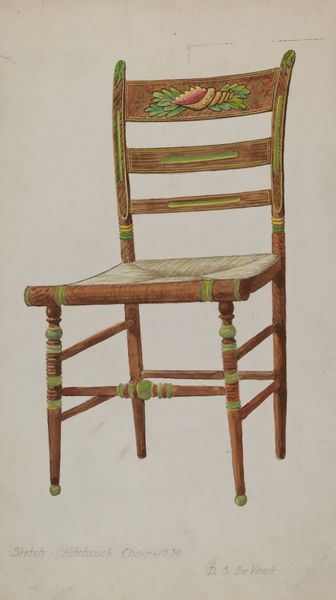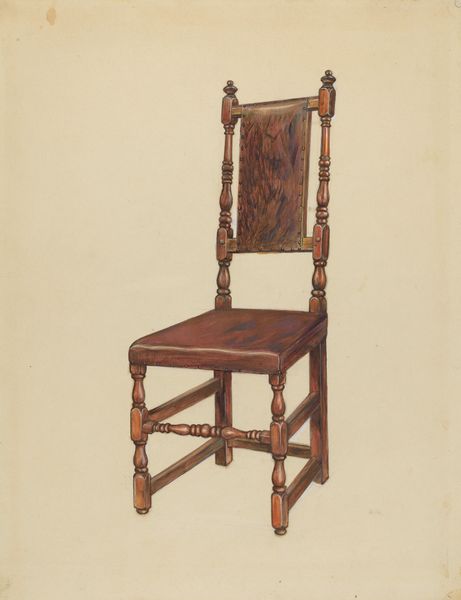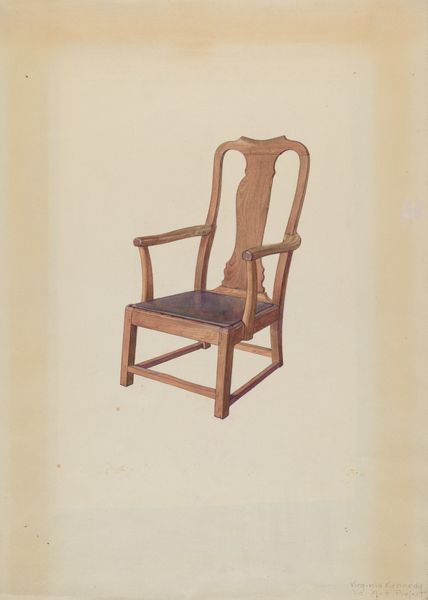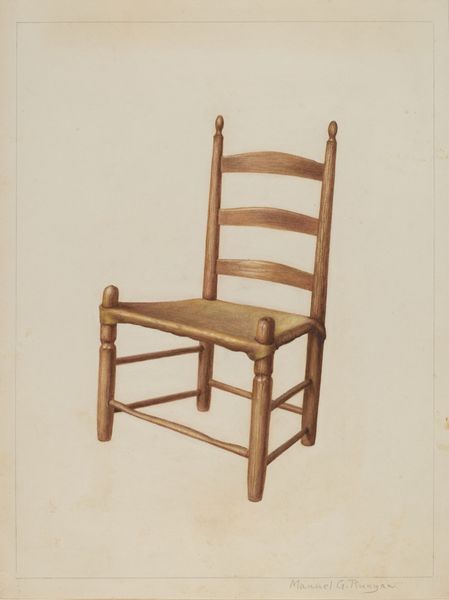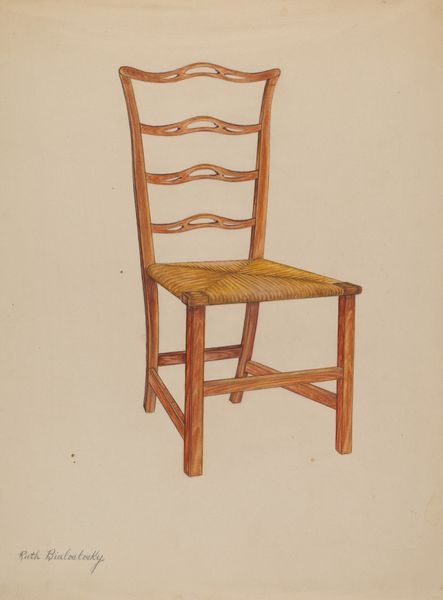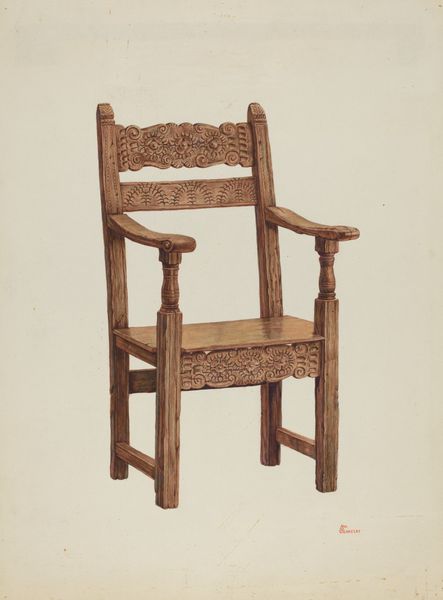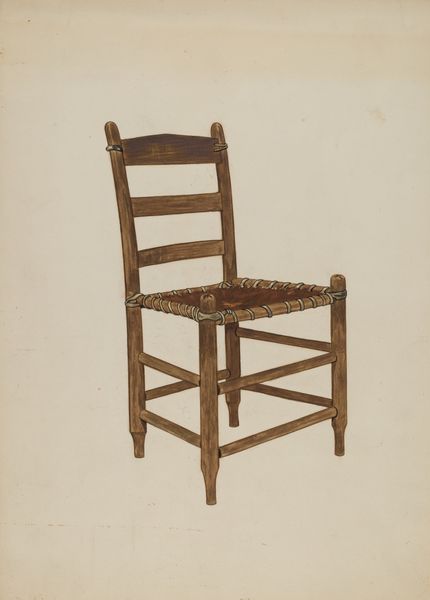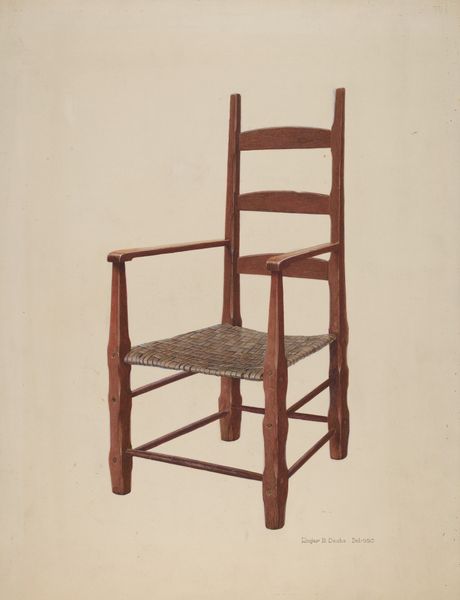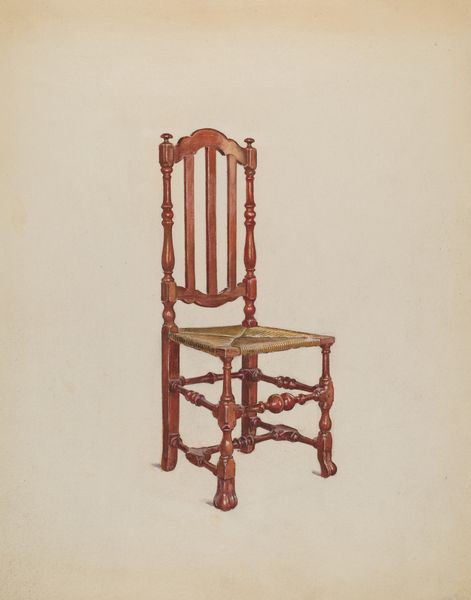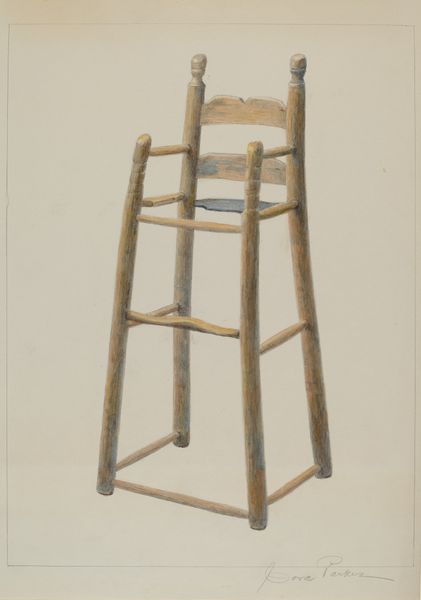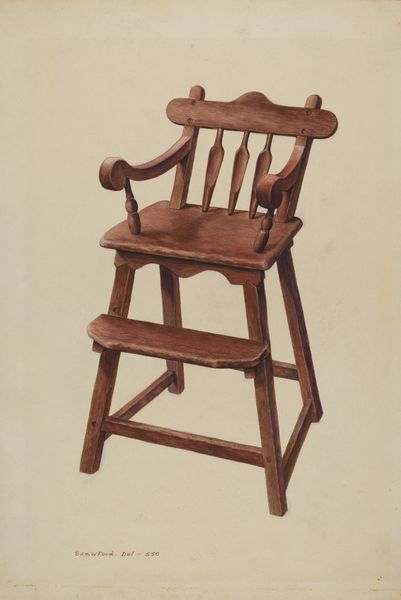
drawing, watercolor
#
drawing
#
landscape
#
oil painting
#
watercolor
#
watercolour illustration
#
academic-art
Dimensions: overall: 35.4 x 25 cm (13 15/16 x 9 13/16 in.) Original IAD Object: 23"high; 9"seat; base 12"
Copyright: National Gallery of Art: CC0 1.0
Curator: This is Cora Parker's "Child's Chair," dating back to around 1938, executed in watercolor. Editor: It's strikingly melancholic, isn't it? The muted colors and that distinct wear and tear create a profound sense of absence. I am struck by the visual simplicity, with emphasis given to the distressed form through careful colorwork and shading. Curator: Parker's artistic practice often focused on depictions of vernacular objects and rural landscapes; an acute observation of everyday life. There’s an interesting intersection here—a mass-produced object, presented with an individualized character. It moves beyond just portraying furniture, engaging ideas about material culture during a period of immense social change. Editor: Absolutely, the composition isolates the chair, turning a mundane object into an icon, drawing the viewer's gaze through an emphasized structure of intersecting verticals and horizontals, carefully contrasted by slight tonal gradations to suggest form. It’s all very subtle, you know. There are passages in this rendering that appear almost abstract when looked at for long. Curator: And this particular chair's visible disrepair is noteworthy. We can imagine it carrying immense sentimental value and how this kind of humble object might offer a lens through which to interpret domestic labor, family, memory. Parker seems to engage an elegy for bygone domestic spaces in times of social change. Editor: Consider how the light seems to almost drain the object of its warmth, reinforcing a kind of forlorn narrative through visual means. We find no trace of that child it was meant for; it has clearly survived many years of use, with no embellishment of color, just tones of faded light across its surface. Curator: True. Parker brings forward some really complex commentary, through accessible means, as to how memory manifests materially. This artwork challenges viewers to reflect on our intimate relationships with utilitarian forms. Editor: For me it’s primarily the quiet beauty of form emphasized by tone which stays, I wonder at her choice not to embellish this in any other way! Curator: Yes, its capacity to incite so much wonder through an otherwise quotidian object truly shows us art's lasting societal function.
Comments
No comments
Be the first to comment and join the conversation on the ultimate creative platform.
